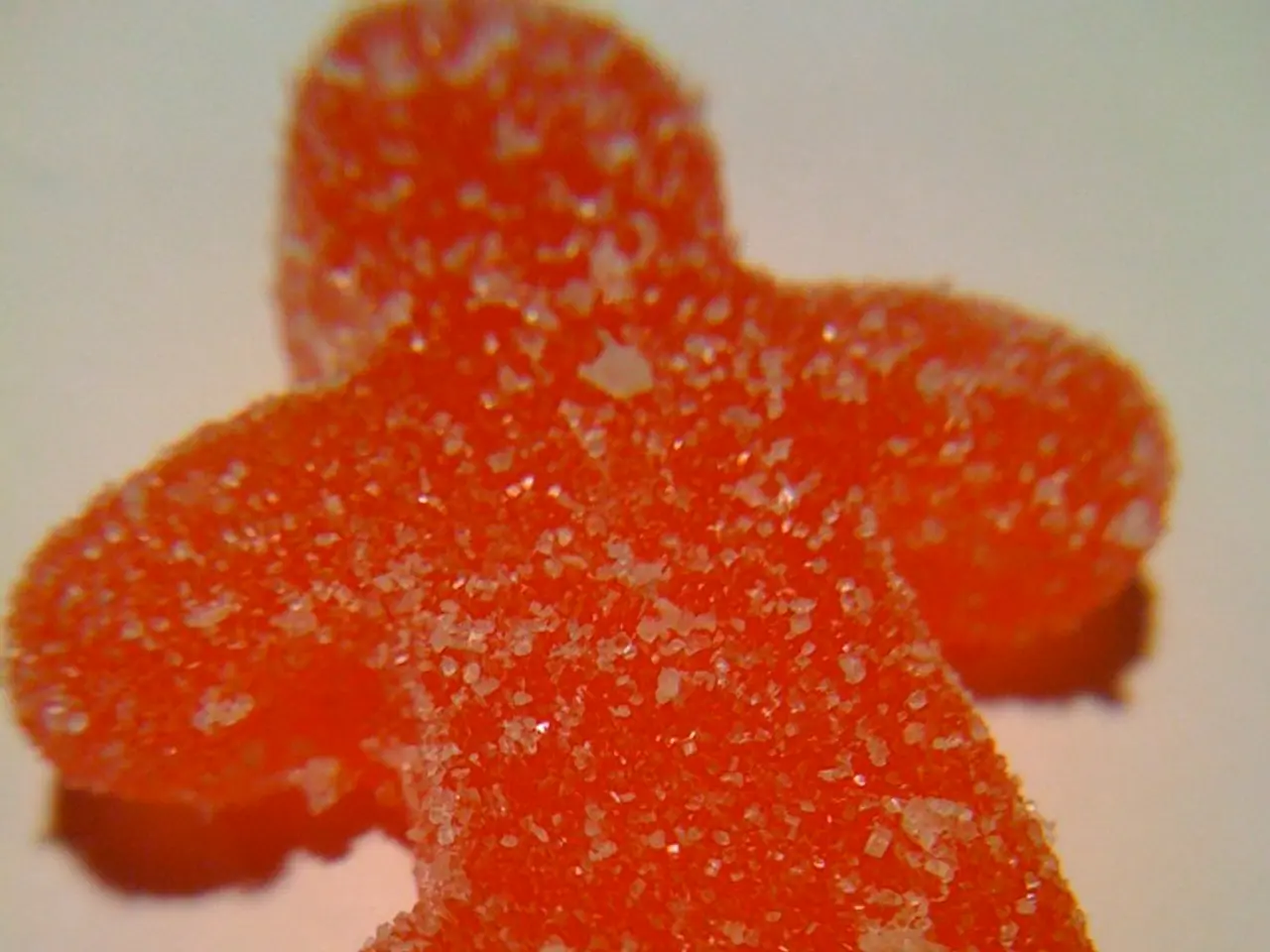Diabetic Blisters: Recognizing Symptoms, Seeking Treatment, and Implementing Preventive Measures
Diabetes, a chronic condition affecting millions worldwide, is not only associated with increased risk of infection and poor wound healing, but also a variety of skin conditions. Here's a guide to some common skin conditions that people with diabetes may encounter.
One such condition is Diabetic Dermopathy, characterized by light brown, scaly patches that often appear on the shins. These lesions are generally harmless and tend to resolve with improved blood sugar control.
Another rare, yet concerning condition is Necrobiosis Lipoidica, a chronic skin condition most common in women with Type 1 diabetes. It presents as shiny, reddish-brown patches, often on the lower legs.
Acanthosis Nigricans, causes dark, velvety patches of skin, especially in body folds such as the neck, armpits, and groin. It is strongly associated with insulin resistance, a hallmark of Type 2 diabetes, but can also occur in Type 1 diabetes.
Skin Tags, soft, benign growths frequently found in skin folds (neck, armpits, groin), are another common skin condition in people with diabetes. Having multiple skin tags is associated with a higher likelihood of developing diabetes.
Bullosis Diabeticorum, or Diabetic Blisters, are painless, non-inflammatory blisters that spontaneously appear on the extremities, such as the feet or hands. These blisters usually heal on their own but can recur.
Granuloma Annulare and Eruptive Xanthomatosis are other less common skin conditions associated with diabetes. Granuloma Annulare presents as smooth, firm, circular lesions that are widespread and not limited to body folds, while Eruptive Xanthomatosis causes yellowish, pimple-like lesions due to high triglyceride levels, a complication of diabetes.
In addition to these conditions, people with diabetes may experience general skin changes such as dry, itchy skin due to poor circulation and nerve damage, and slowed wound healing and increased infection risk due to microvascular damage and impaired immune function.
Preventing and managing these skin conditions begins with regulating blood sugar levels, the most important step a person can take. Wearing shoes that fit properly and avoiding those that chafe or irritate the skin, limiting exposure to UV light and using sunscreen when outdoors, and regularly inspecting arms, hands, legs, and feet for blisters and other skin conditions also help.
If you notice any changes to your skin, including the formation of diabetic blisters, it's essential to consult your doctor. Prompt medical treatment for diabetic blisters may be necessary when symptoms such as swelling of the skin, red or irritated skin around a lesion, a feeling of warmth around a blister, pain, fever, and skin infections are present.
In severe cases, a doctor might perform a biopsy of the diabetic blister, and treatment may focus on preventing infection, such as avoiding puncturing or bursting the blisters, using saline compresses, bandaging, aspiration, and topical antibiotics or steroids.
Remember, managing diabetes and maintaining good skin health go hand in hand. Regular check-ups with your healthcare provider and diligent self-care can help prevent and manage these skin conditions.
[1] American Diabetes Association. (2021). Diabetes and Skin Complications.
- Diabetes Mellitus, a medical condition, is not only linked to an increased risk of infections and poor wound healing, but also associated with a variety of skin conditions such as Diabetic Dermopathy, Necrobiosis Lipoidica, Acanthosis Nigricans, Skin Tags, Bullosis Diabeticorum, Granuloma Annulare, and Eruptive Xanthomatosis.
- Good health and wellness, including fitness and exercise, mental health, and skin care, play a significant role in managing and preventing these skin conditions often encountered in people with diabetes.
- Nutrition, particularly maintaining balanced levels of sugar and triglycerides, is crucial in managing these skin conditions, as high sugar levels and triglycerides can contribute to skin issues like Acanthosis Nigricans and Eruptive Xanthomatosis.
- Science has provided resources for understanding and managing diabetes-related skin conditions, including guides, articles, and advice from organizations such as the American Diabetes Association, Mayo Clinic, National Institute of Diabetes and Digestive and Kidney Diseases, WebMD, and Cleveland Clinic.




